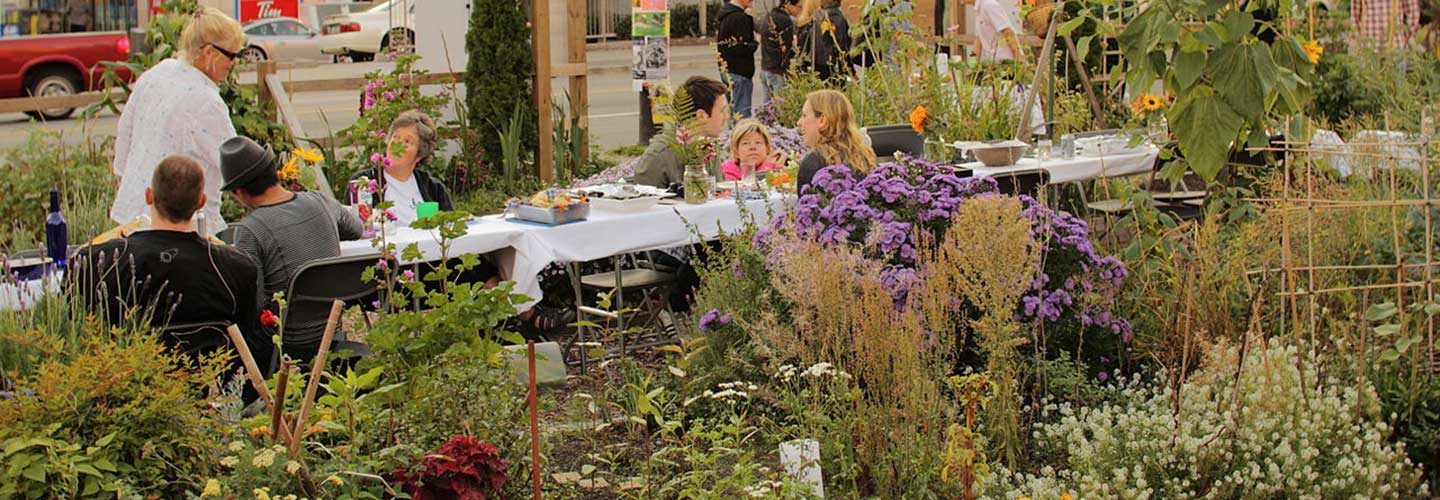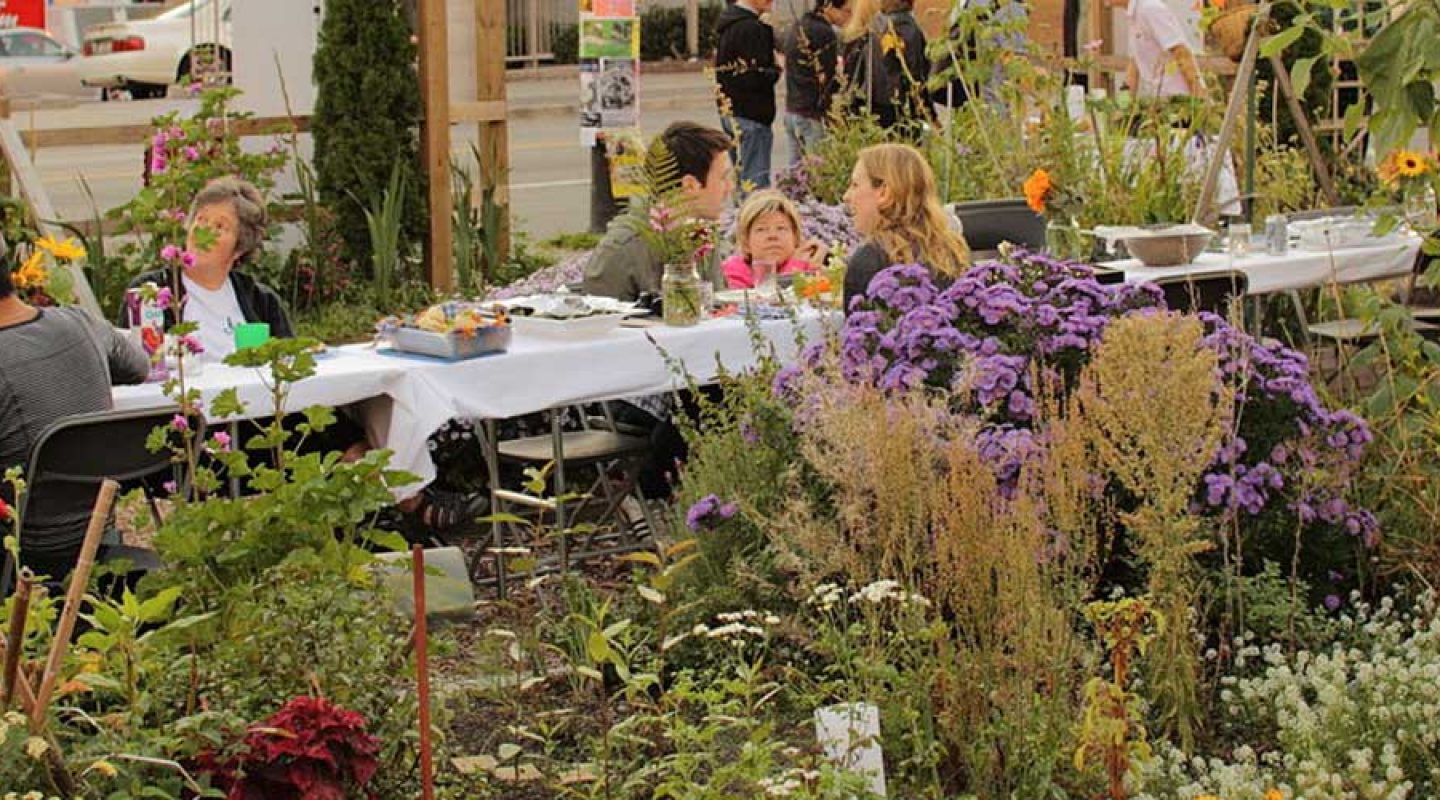Homepage > Uncategorized > Roll up your sleeves and say hello to company gardens
Roll up your sleeves and say hello to company gardens


Highlights:
- Company gardens are an innovative, inexpensive approach to provide at once nutritious food, a restorative and stimulating environment, and a meeting area for employees
- They represent an ideal opportunity to increase employees well-being, health, productivity, and stress resilience
How often do you or your employees dig your hands into the soil during workdays? Probably not very often and you might not even consider it to be a very tempting idea. But considering that highly successful companies like Google, Timberland, and Hyatt are switching their manicured corporate lawns to on-site food-producing gardens, you might want to think different and join the growing movement of companies who decided to act on the promising benefits of company gardens.
The last decades have seen an unprecedented, soaring prevalence of chronic illnesses (see Yach et al., 2004) and much of it has been associated with, amongst other factors, unbalanced nutrition, increasing (workplace) stress, and lacking exercise, representing an enormous burden for employee’s productivity and well-being. In response to this, more and more companies are taking matters into their own hands. From meditation facilities and on-site yoga classes to actively supporting people’s relationships at work, companies of all sizes, from small firms to corporate giants, have begun to create well-being programmes that embody a holistic approach to health. And support for their approach comes from a growing body of research, which shows that lifestyle management strategies, by way of contrast to conventional approaches, are very effective in preventing or controlling chronic illness and otherwise reducing stress and improving overall health.
Out of these new strategies, company gardens turn out to be among the most promising, not unlikely because they simply offer so many each other reinforcing positive effects simultaneously!
Creating the optimal environment
A workplace garden is a common meeting area where employees can socialize in a natural environment and work together to grow all sorts of edibles, from basil, parsley, and thyme, to kiwis, hazelnuts, grapes, fresh salads, peaches, apples, or strawberries – whatever you feel like! This innovative, inexpensive approach to well-being provides at once nutritious food, a stimulating and restorative environment, and a meeting point and thereby represents the perfect opportunity to increase employees well-being, relationships, productivity, health, stress resilience, and even their loyalty towards the company. In addition, workplace gardens have been found to lead to higher productivity, less misses at work, and a better work climate. And considering that chronic illness and related lifestyle risk factors are the leading drivers of health care costs for employers, lifestyle management initiatives, such as an opportunity to garden, suddenly become valid business investments.
Food and vitality
Nutrient density in our food has been decreasing continuously over the last decades, especially in food coming from conventional agriculture (see Davis, 2009), and workplace gardens provide the ideal response to the increasing demand for affordable, local, organic, and healthy food. In addition, working in a garden has been shown to substantially decrease stress levels in individuals and it even provides employees with an opportunity to be physically active at work. Even low intensity workout in nature has been found to boost vitality and such a boost in vitality clearly benefits also the employees work and well-being. And believe it or not – even the mere exposure to soil bacteria has been found to make you happy and relaxed! Microorganisms, such as the Mycobacterium vaccae, have been found to stimulate serotonin production, thereby eliciting a jolly state of mind, and are even being considered as a possible treatment for depression (see Lowry et al., 2007). Not to mention, that also the exposure to nature has been associated with mental and physical relaxation and a recovery of the immune system.
Whether employees engage as part of their working hours or not and whether the harvest is for the employees to take home or for the company kitchen, the possibilities are plentiful and help making the company a perfect place to work, while they offer a promising way to keep our social and ecological environments healthy.
Moreover, gardeners often report eating more vegetables and fruit compared to non-gardeners and they learn how to grow their own food, why healthy nature matters and what they can do to help their ecosystems recover. Especially the latter seems more valuable than ever, considering that our ecosystems are severely degraded and that climate change is well on its way. Knowing what we can do will help us taking the lead for the future that we want.
A sense of belonging
And in addition to all that, whenever we garden with others, develop a community garden, or donate some of our rich harvest to people in need, we feel a sense of belonging. And bonding with our peers can lead to more supportive, collaborative, and nourishing relationships, which in turn decrease our stress level and nourish us profoundly. Gardening makes us happy on so many levels simultaneously, that it is an exceptionally powerful and efficient way to activate our body’s healing response mechanisms and to find some true rest in the midst of even the most stressful days.
The growing list of companies that introduced company gardens for their employees includes, amongst others, Kraft Foods, Hyatt, Timberland, Google, Yahoo, and Hewlett Packard. And while some of their other business practises might be seen as controversial, they all have introduced company gardens for their employees, many of which even started gardening at home as a result of it. And the more companies rewrite what constitutes an acceptable corporate landscape, the easier it will be for others to follow suit.
How to get started
First, observe and understand your land. Where do sun, wind, and water come from? Where can you catch rainwater and where could your garden benefit from a wind break? How can you turn seeming problems into solutions? Could a shady area in the garden turn into a cooling oasis during summer? Check the soil and plant only species that will thrive in your geographic location. If necessary, bring in a good layer of soil and mulch to head start your soil life and get stronger plants. Have someone in charge, someone who coordinates supplies and who can introduce interested people to the garden. Plan for an overabundance of food. Have all interested employees participate. Offer education on safe and sustainable gardening methods, such as an introduction to permaculture, food forests, or edible landscaping. Let employees express enjoyment in their workplace gardening experience and let them consume (or donate) vegetables and fruit from the garden! And finally, from the second year onwards, use participants’ feedback to plan for the following years.
And now, please get your hands dirty and create a more nourishing work environment for you and your colleagues!
For a deeper dive
Toby Hemenway – Gaia’s Garden
References
Burls, A. (2007). People and green spaces: Promoting public health and mental well-being through ecotherapy. Journal of Public Mental Health, 6, 24-39.
Davis, D. R. (2009). Declining fruit and vegetable nutrient composition: What is the evidence? HortScience, 44, 15-19.
Donkeycart (Author). Veg Out Community Garden, St. Kilda, Melbourne [Digital Image] Retrieved from https://res-1.cloudinary.com/the-university-of-melbourne/image/upload/s--h15rg8pi--/c_limit,f_auto,q_75,w_1784/v1/pursuit-uploads/40b/d29/3fd/40bd293fda054845a998e50358c68d5e7cd998d064ea7b4c58095922309d.jpg
Lowry, C. A., Hollis, J. H., De Vries, A., Pan, B., Brunet, L. R., Hunt, J. R., ... & Rook, G. A. (2007). Identification of an immune-responsive mesolimbocortical serotonergic system: Potential role in regulation of emotional behavior. Neuroscience, 146, 756-772.
McCormack, L. A., Laska, M. N., Larson, N. I., & Story, M. (2010). Review of the nutritional implications of farmers' markets and community gardens: A call for evaluation and research efforts. Journal of the American Dietetic Association, 110, 399-408. Peters, G. (Photograph). (2010) Davie Street community garden Vancouver BC Canada [Digital Image] Retrieved from https://en.wikipedia.org/wiki/Vancouver_Community_Gardens#/media/File:2010_Davie_Street_community_garden_Vancouver_BC_Canada_5045979145.jpg
Van Den Berg, A. E., & Custers, M. H. (2011). Gardening promotes neuroendocrine and affective restoration from stress. Journal of Health Psychology, 16, 3-11.
Wood, C. J., Pretty, J., & Griffin, M. (2016). A case–control study of the health and well-being benefits of allotment gardening. Journal of Public Health, 38, 336-344.
Yach, D., Hawkes, C., Gould, C. L., & Hofman, K. J. (2004). The global burden of chronic diseases: Overcoming impediments to prevention and control. Jama, 291, 2616-2622.





